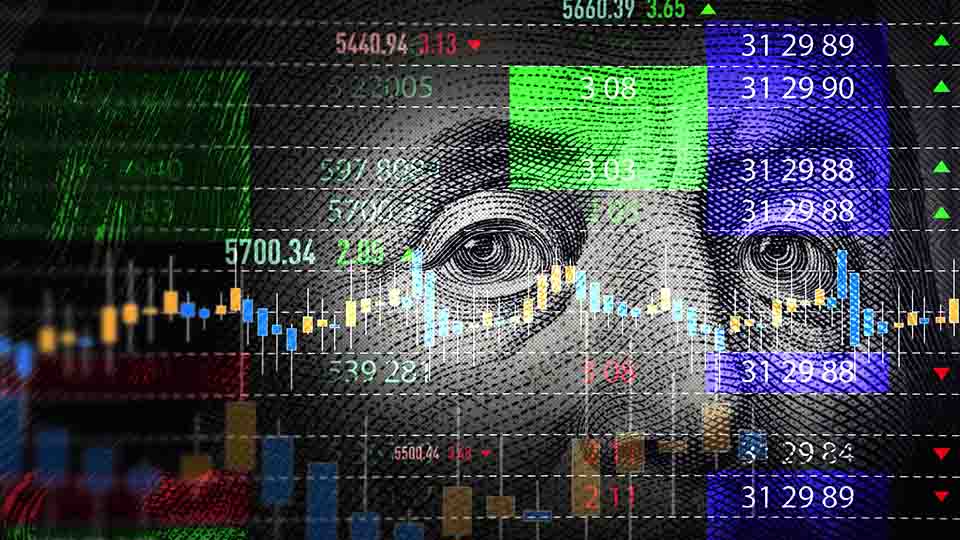What the Russia-Ukraine Crisis Means for Your Portfolio (Updated)
10 March 2022
Summary
To help address investor concerns about the Russia-Ukraine conflict, our Portfolio Managers examine the impact on their respective asset classes and potential allocation changes. Amid ongoing developments that may change how different asset classes are affected, we will be making timely updates below to provide you with our latest views.
The Russia-Ukraine conflict is dominating news headlines. As the world watches how the situation unfolds, many investors may also be concerned about how their portfolios may be affected.
To help address investor questions, we pulled together insights from our Portfolio Managers about the impact on their respective asset classes and potential allocation changes.
- Gold
- Bitcoin and Cryptocurrencies
- Active Emerging Markets Bond Strategy
- Emerging Markets Debt ETFs
- Emerging Markets Equity
- Commodities
- Energy Considerations
Gold, updated 28/02/2022
Joe Foster, Portfolio Manager, Gold Strategy: As safe haven assets, we believe gold and gold stocks stand to gain the most from the Russian invasion of Ukraine. This conflict has raised risks globally as hostilities in other parts of the world may also escalate. U.S. sanctions on Russia have driven energy prices higher, further increasing inflationary pressures.
We have already positioned our Gold Strategy for stronger gold prices that we expect to be driven by inflation and the risks to the economy and markets posed by the coming U.S. Federal Reserve rate hiking cycle. The Strategy is fully invested in gold mining stocks, thereby potentially achieving leverage to gold price gains.
Bitcoin and Cryptocurrencies
Matthew Sigel, Head of Digital Assets Research: Thinking longer term, if Russia manages to claim Ukraine and maintain control over Europe’s future energy supply without a violent NATO response, Bitcoin’s value to the Kremlin may grow as a counterbalance to the U.S. Russian President Vladimir Putin has previously noted “certain competitive advantages” in the country when it comes to mining, given the energy surplus.1 Official Russian policy for bitcoin has not yet been set.
It is worth noting that the Nasdaq 100 has had more 1 standard deviation daily moves vs. its 5-year average this year than Bitcoin, according to Bloomberg. Bitcoin’s relative volatility continues to demonstrate a long-term downtrend. $39,400 and $32,400 are the 61.8% and 76.4%, respectively, retracements of 2020’s post-election breakout from what was then fresh all-time highs. Bitcoin’s hash rate (total electricity draw) spiked to an all-time high this week, according to Blockchain.com, indicating that suppliers are gearing up for more usage.
Among smart contract platforms, a risk-off environment2 has previously led to Ethereum outperforming other smart contract protocols, though this relationship is somewhat tenuous in my view.
Active Emerging Markets Bond Strategy, updated 11/03/2022
Eric Fine, Portfolio Manager, Emerging Markets Bond Strategy: Ukrainian bonds just got very cheap relative to history. Ukraine bonds collapsed following Russia’s invasion. As of 8/3/2022, shorter-dated bonds (maturing in 2022) are trading at around 36 cents on the dollar, while longer-dated bonds (maturing in 2033) are trading around 23 cents on the dollar. The market is pricing in the certainty of default, clearly. Ukraine is likely to finance itself. According to Ukraine’s external financing requirement, its 2022 financing of $2.7B was fully funded by the official sector, before additional support that is being announced for Ukraine.
Our bottom line is that Ukraine bonds reflect the fact of the invasion, but not the likelihood of new international support. As a result, we are accumulating bonds. We don’t discount that as Russia takes Kyiv, Ukraine bonds could suffer more. But, when the dust settles, we believe a Ukraine that can finance itself easily is likely to emerge. We obviously can’t wait until that scenario becomes obvious, as the bonds will have gapped upward. As a result, we’re accumulating.
Emerging Markets Debt ETFs, updated 23/02/2022
Fran Rodilosso, CFA, Head of Fixed Income ETF Portfolio Management: We do not see major immediate implications for Russian local currency bonds at this point given the focus on new issuance, and because there is no requirement to sell existing holdings. Longer term, however, there may be a liquidity impact if sanctions remain in place and foreign ownership continues to decline. Given that new issuance will not be index eligible, Russia’s weight in global benchmarks will likely decline over time. Ukraine is expected to enter the J.P. Morgan GBI-EM Global Core Index at the end of March, and given the fluidity of the situation, any impact to liquidity bears watching. We expect that the index provider, J.P. Morgan, will continue to assess Ukraine’s eligibility up until the expected inclusion date. The corporate entities that have been named so far are not currently included in corporate indices that our funds track.
Any additional rounds of sanctions will likely be stronger, but we believe they will focus on the same targets: sovereign, state owned entities (especially banks), strategic industries and individuals. Any sanctions that result in the inability to transact in Russia related bonds (including those already issued and outstanding) will lead to the removal of those bonds, or the country, from emerging market debt indices.
Our emerging markets debt ETFs are passively managed, so allocation shifts will be in response to any changes made by the indexers. That said, we have tended to be defensive at the margin in order to manage liquidity should an escalation of sanctions negatively impact liquidity of bonds issued by Russian entities. We are more sensitive in this regard to bonds issued by the sovereign, sovereign owned entities, and issuers in strategically important sectors.
Emerging Markets Equity, updated 10/03/2022
David Semple, Portfolio Manager, Emerging Markets Equity Strategy: The Russian invasion of Ukraine has created shifts in investment portfolios across asset classes globally. As the Ukraine-Russia conflict has developed, we have significantly reduced overall Russia exposure and continue to closely monitor the situation. Russia exposure within the portfolio was reduced to 1% as of the end of February. The remaining exposure is currently concentrated in four companies that are domestic demand, local consumer-driven names.
In general, higher commodity prices tend to coincide with better emerging markets performance, but usually this comes with better global growth expectations, which is not the case now. Some countries fare better in a higher commodity environment, such as South Africa, Brazil and Indonesia, whilst net importers such as India can struggle with the cost of energy imports, as an example. Commodities apart, Russia’s trade linkages with major emerging markets countries are very low. But broader commodity price increases have caused increasing chatter about stagflation. The silver lining is that those fears may cause developed market central banks to be more cautious in rate increases, and the largest economy, China, is actively easing. Broadly across emerging markets—having already hiked rates in many places and with less of an inflation issue than the U.S.—real rate differentials are very high. Basic balances, current account and foreign direct investment are at 15-year highs.
In times like these, we remind investors to focus on long-term structural growth. Successful, long-term, global investors survive short-term falls by sticking to investment principles that have withstood the tests of time. For investment portfolios more broadly, this may include better diversification across asset classes (equities, fixed income and alternatives) and markets (developed and emerging). For emerging markets equities in particular, investing in forward-looking, sustainable and structural growth companies with strong balance sheets and stable earnings has historically given resilience to portfolios.
Commodities, updated 07/03/2022
Roland Morris, Portfolio Manager and Strategist: Now that the Russia-Ukraine war is looking like the worst possible case, markets are reflecting the rising commodity supply risks. Ukraine and Russia together are critical supply sources for several very important commodities. Europe depends on Russia for the majority of its natural gas and crude oil imports, which flow by pipeline mostly through Ukraine. Together, Russia and Ukraine are the major suppliers of wheat, sunflower oil and fertilizers to Europe and the Middle East. Additionally the record prices in Europe for natural gas and electricity are shutting down fertilizer and aluminum production. Russia is also a very important producer of aluminum, nickel and palladium. All of these commodities were in short supply before the war, and in the near term, we believe there is no easy fix to the supply shortages.
Energy Considerations, updated 08/03/2022
Shawn Reynolds, Portfolio Manager, Natural Resources Equity: The Russian oil ban is the biggest disruption to energy markets since the Arab oil embargos of the 1970s. However, this situation is worse, in our view, because it could eventually entail all commodities. Russia is the second largest producer of energy, materials and agriculture products in the world. The U.S. is the largest, and has shale oil and an agriculture industry that basically increases food availability/security every year.
This is most definitely not true for Europe, which has essentially been off-shoring carbon emissions by increasing reliance on exports of everything from oil, natural gas, most metals, and a significant portion of its agriculture products. I believe that the only way this gets fixed in Europe is via a long term re-investment plan in its resources-related infrastructure (both traditional and alternative) and that will be extremely expensive and commodity intensive, hence the rumor of an EU mega-bond issuance.
When combined with continuing reopening, an opening and easing China, and lingering pandemic stimulus, the likelihood of a super cycle across all commodities seems more apparent. And this is not likely to go away with the transition to a metals-based energy system putting global energy security in the hands of China, with the resulting reaction of continued reshoring of green resources.
There will be economic pain globally, but the U.S. is in the best shape—although we may have to choose the lesser of evils between Iran and /or Venezuela. This is only going to exacerbate the political quagmire of the EU, with different countries likely to have dramatically different views and capabilities to survive this. This could very well lead to new political blocs being formed.
Finally, we should pay attention to the MENA region. Some countries are clearly exporters of energy, while others are net consumers, and the entire region is highly dependent on agriculture/food imports.
1The Street, “Vladimir Putin, Russia Boasts Competitive Advantages in Bitcoin Mining," 26/01/2022.
2A risk-off environment is when investor sentiment turns bearish and investors are reducing risk.
Important Disclosure
This is a marketing communication. Please refer to the prospectus of the UCITS and to the KID before making any final investment decisions.
This information originates from VanEck (Europe) GmbH, which has been appointed as distributor of VanEck products in Europe by the Management Company VanEck Asset Management B.V., incorporated under Dutch law and registered with the Dutch Authority for the Financial Markets (AFM). VanEck (Europe) GmbH with registered address at Kreuznacher Str. 30, 60486 Frankfurt, Germany, is a financial services provider regulated by the Federal Financial Supervisory Authority in Germany (BaFin).
The information is intended only to provide general and preliminary information to investors and shall not be construed as investment, legal or tax advice VanEck (Europe) GmbH, VanEck Switzerland AG, VanEck Securities UK Limited and their associated and affiliated companies (together “VanEck”) assume no liability with regards to any investment, divestment or retention decision taken by the investor on the basis of this information. The views and opinions expressed are those of the author(s) but not necessarily those of VanEck. Opinions are current as of the publication date and are subject to change with market conditions. Certain statements contained herein may constitute projections, forecasts and other forward-looking statements, which do not reflect actual results. Information provided by third party sources is believed to be reliable and have not been independently verified for accuracy or completeness and cannot be guaranteed. Brokerage or transaction fees may apply.
All performance information is based on historical data and does not predict future returns. Investing is subject to risk, including the possible loss of principal.
No part of this material may be reproduced in any form, or referred to in any other publication, without express written permission of VanEck.
© VanEck (Europe) GmbH / VanEck Asset Management B.V.
Sign-up for our ETF newsletter
Related Insights
Related Insights
13 December 2024
06 August 2024
01 May 2024
12 February 2024




